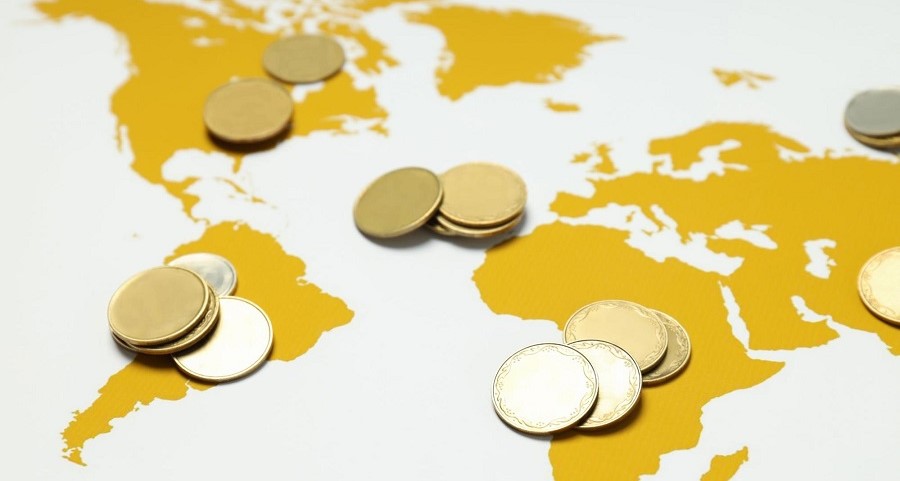Exchange rates are pivotal in the global economy, affecting everything from international trade to investment flows. They affect the cost of imports and exports, profitability of foreign investments, and competitiveness of businesses. For policymakers, businesses, traders, and travellers, exchange rate knowledge aids in financial planning, risk management, and strategic decision-making, ensuring better economic outcomes and minimising potential losses due to currency fluctuations. Here in this blog, we’ll explore the primary types of exchange rates and how they function.
Table of Contents
What Is an Exchange Rate?
- The exchange rate is the price at which one currency can be exchanged for another.
- It is the value of one country’s currency expressed in another country’s currency.
- It is also commonly known as the foreign exchange rate or forex rate.
- Market forces like supply and demand, economic indicators, and geopolitical events influence these rates.
Fixed Exchange Rate
- A fixed exchange rate, also known as a pegged exchange rate, is one where a country’s currency value is tied to another stronger currency, such as the U.S. dollar.
- The central bank maintains this fixed rate by buying and selling its own currency on the foreign exchange market to counteract supply and demand imbalances.
How It Works
- Government intervention: To maintain the fixed rate, the central bank intervenes in the forex market. For instance, if the currency’s market value drops below the fixed rate, the central bank buys its currency using its foreign reserves.
- Monetary policy: The central bank may adjust interest rates to influence capital flows and maintain the peg. Higher interest rates attract foreign capital, supporting the currency.
Advantages
- It provides exchange rate stability, which can promote international trade and investment.
- It helps control inflation by tying the currency to a stable and internationally accepted currency.
Disadvantages
- It requires large foreign exchange reserves to maintain the peg.
- It limits the ability to use monetary policy for domestic economic goals, such as controlling unemployment.
- In case of economic downturns, the government may lack capital to maintain the peg and to get back on its feet.
Floating Exchange Rate
A floating exchange rate is determined by the open market play of supply and demand. Unlike a fixed rate, the central bank does not predetermine a target or intervene to stabilise the currency.
How It Works
- Market forces: The currency value fluctuates based on economic indicators, investor sentiment, geopolitical events, and other market dynamics.
- Automatic adjustment: Trade imbalances are naturally corrected. For instance, if a country imports more than it exports, its currency will depreciate, making exports cheaper and imports more expensive, thus balancing trade.
Advantages
- Reflects true economic conditions, as the currency value adjusts to market dynamics.
- It allows for independent monetary policy to address domestic economic issues.
Disadvantages
- The rate can be highly volatile, leading to uncertainty in international trade and investment.
- It may lead to speculative trading activities and financial instability.
Managed Float
A managed float, or dirty float, combines aspects of fixed and floating exchange rates. While the currency generally floats in the market, the central bank occasionally intervenes to stabilise or adjust its value.
How It Works
- Market influences: The currency value is primarily determined by market forces but with occasional central bank intervention.
- Intervention criteria: Interventions may occur to prevent excessive volatility, correct misalignments, or achieve specific economic objectives.
Advantages
- It provides flexibility while avoiding extreme volatility.
- Central banks can still influence the currency to stabilise the economy.
Disadvantages
- It can be unpredictable, as the extent and timing of interventions are not always transparent.
- Frequent interventions lead to uncertainty about the actual market-determined value of currencies.
- Interventions may be fueled by political agendas disturbing market dynamics.
- It requires careful management to avoid market distortion.
Pegged Exchange Rate Within a Band
This system, also known as a crawling peg or target zone, allows the currency to fluctuate within a specified range or band around a central value.
How It Works
- Central rate: A central exchange rate is established with upper and lower limits.
- Intervention within the band: The central bank intervenes only when the currency approaches the edges of the band, allowing for some degree of natural fluctuation.
Advantages
- It combines the stability of a fixed rate with the flexibility of a floating rate.
- It reduces the need for constant intervention while providing some predictability.
Disadvantages
- It still requires significant foreign reserves for intervention.
- Market participants may test the limits of the band, leading to potential speculative attacks.
Conclusion
The choice of exchange rate regime impacts economic stability, inflation control, and international competitiveness. While fixed and pegged systems offer stability, they require substantial reserves and limit monetary policy flexibility. Floating and managed float systems provide flexibility and align with market conditions but can introduce volatility. Understanding these mechanisms helps in navigating the complexities of international finance and making informed economic decisions.

